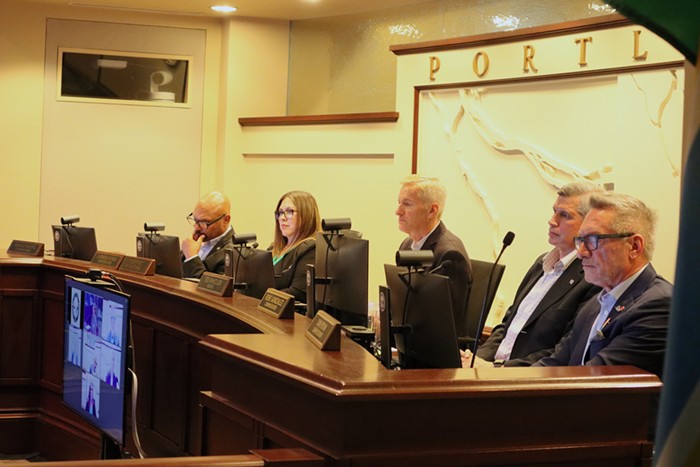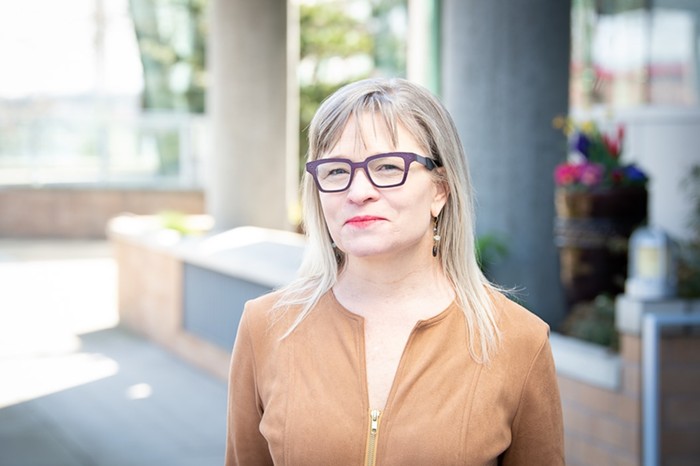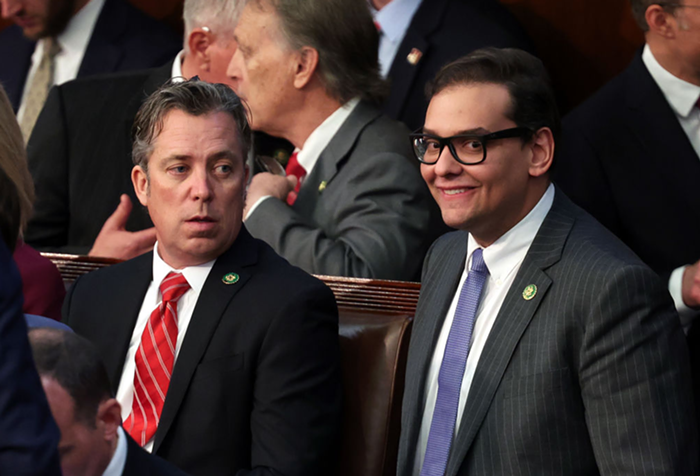
- Nathan Gilles
- Nefi Martinez-Bravo testifies.
Yesterday, the Multnomah County courtroom of Judge Cheryl Albrecht saw yet another Occupy Portland-related trial. This time for the unpermitted February 6, 2012 anti-police brutality protests.
The night of February 6, or F6, is one both protesters and cops won’t forget anytime soon. It was the night both kinda went ape-shit. They yelled insults at each other. Anarchists broke stuff, and cops tackled people to the ground. Stuck in the middle were curious onlookers and members of Occupy Portland.
In fact, technically F6 wasn’t an Occupy protest at all. Instead, a group of self-proclaimed anarchists organized the protest, saying Occupy wasn’t going far enough. In online forums, the group called for a “diversity of tactics.” The Portland Police Bureau monitored these forums and concluded F6 would be chock full of people carrying "pyrotechnic devices and projectiles such as paint bombs, rocks, bottles, roman candles, and possibly even Molotov cocktail bombs.” In response, the police pulled out all the stops, bringing bike cops, riot cops, and horses to the protest. There did wind up being people dressed in the anarchist Black Bloc uniform of black hoodies and bandanas, and they did break stuff, but the protesters didn’t live up to their Molotov-cocktail-throwing reputation.
Of the ten protesters arrested on February 6, the last two faced trial yesterday—most of the rest plead guilty at arraignments and were sentenced to community service. Yesterday, the county judge heard the cases of 28-year-old Nefi Martinez-Bravo and 23-year-old Taylor Sharpe—a third defendant was a no-show. Like many of the other Occupy cases, both Martinez-Bravo and Sharpe were arrested on misdemeanor charges that were later reduced to violations. The two now face charges of obstructing a roadway—a traffic violation—and failing to obey a police officer. Judge Albrecht is expected to decide on their guilt or innocence by mid-December. But if there is one thing clear from yesterday’s proceedings, these guys aren’t the window-smashing anarchists the cops were so worked up over.
Video taken by police, protesters, and the media show neither Sharpe nor Martinez-Bravo dressed like anarchists nor making any attempt to hide their identity behind bandanas. Both men also told the court they showed up late to the protest, well after the night’s vandalism was over.
F6 breaks down like this: at around at around 6 pm on February 6, a group of about 80 protesters left Colonel Summers Park in Southeast Portland. From there, the group, chanting “No Justice, No Peace, Fuck the Police,” headed east on residential SE Yamhill before heading north to the much busier threw streets of SE Belmont and Stark. On their journey, a small group of maybe 10 to 20 protesters dressed liked anarchists spray-painted a car, smashed-up two other cars, and busted up a storefront widow. At that point the cops started blaring an order to vacate the street or be “subject to arrest,” as they followed the crowd with the ice cream truck—a vehicle with mounted bullhorns used during protests. At around 7:00pm, on SE Belmont between SE 20th and 23rd Ave, riot cops and bike cops swooped in dispersing the crowd by chasing people out of the street and tackling them to the ground. The majority of the night’s arrests happened then. Nefi Martinez-Bravo’s arrest was one of these. Later, a much smaller crowd of maybe 30 people moved south on SE 20th and then east on SE Hawthorne, the last batch of arrests occur around SE 25th Ave and Hawthorne, one of these was Taylor Sharpe’s.
Martinez-Bravo’s case is a he-said-they-said situation. During yesterday’s proceedings, the defendant kind of half admitted to stepping in the road at one point to see what was happening, which seemed to be corroborated by police testimony. However he said he didn’t know he wasn’t supposed to be in road at that time, because, as he told the court, he had just arrived at the protest from another direction and, consequently, hadn’t heard the ice cream truck order. The prosecutor, Deputy District Attorney Brian Lowney, called this “convenient.” But what actually happened is unclear.
On top of having to defend himself, English is a second language for Martinez-Bravo, and in court yesterday, he clearly struggled to articulate what happened to him. But he might have won sympathy points with Lowney after he showed video of himself on the sidewalk curled up in the fetal position getting tackled by two Portland cops.
Members of Occupy have long suspected cops “snatch and grab” protesters while on the sidewalk. And they do. The cops don’t call it that, of course. They say protesters are arrested on the sidewalk only if they were first in the street and didn’t leave following orders to do so. Taylor Sharpe is one of these suspected rule breakers.
Like Martinez-Bravo, Sharpe was also arrested on the sidewalk. And like Martinez-Bravo, the cops claimed he was, at one point, in the street. In Sharpe’s case it was at around SE Hawthorne and 25th, or roughly across from the Rivermark Community Credit Union. (Nobody seems to know exactly what time it was, but it was sometime after 7 pm).

- Nathan Gilles
- Taylor Sharpe testifying.
Sharpe’s case is also a bit of a he-said-they-said thing. The police claim the PSU student went off the sidewalk at some point and was nearly arrested by an officer, but managed, somehow, to escape the cop’s clutches and return to the sidewalk, where, they say, he stayed—thinking he was safe. Sharpe told the court this never happened, he never left the sidewalk, and in the dim light, the cops mistook him for someone else. And he made a very strong argument.
In his defense, Sharpe offered testimony from a local woman—not a protester, just a “nosey Rosey”—who sought Sharpe out after she saw him knocked down by the cops and taken from the sidewalk. Sharpe also showed the court police video and video taken by a Livestream videographer, who also testified. None of the footage shows Sharpe on the street. Sharpe’s witnesses also couldn’t place him there. Only the cops could. On top of that, the officer who initially identified Sharpe didn’t arrest him. Two other officers did that, after, that is, they got a description of Sharpe from yet another officer. Sharpe was identified as a young man in black Columbia jacket. A very generic description, Sharpe argued. (And a commenter will make a joke about wearing black to an anarchist-organized protest in three, two, one…). But this might be enough to find him guilty.
Because Sharpe and Martinez-Bravo’s cases are only violations, the cases against them don’t need to be beyond a reasonable doubt. That means what the prosecution argued might be enough for guilty verdicts—although, Lowney admitted, after watching video of Martinez-Bravo being tackled-by-cops, the prosecution’s argument for failing to obey an officer is weak in Martinez-Bravo’s case. In Sharpe’s case, Judge Albrecht will have to decide whether Sharpe’s civilian witnesses have sharper eyes than the DA’s police witnesses. She’s expected to make her verdict in these cases after she considers how constitutional arguments presented by Occupy’s defense-lawyer brain trust might apply to all the Occupy cases on her docket. Her decision is expected by mid-December.












